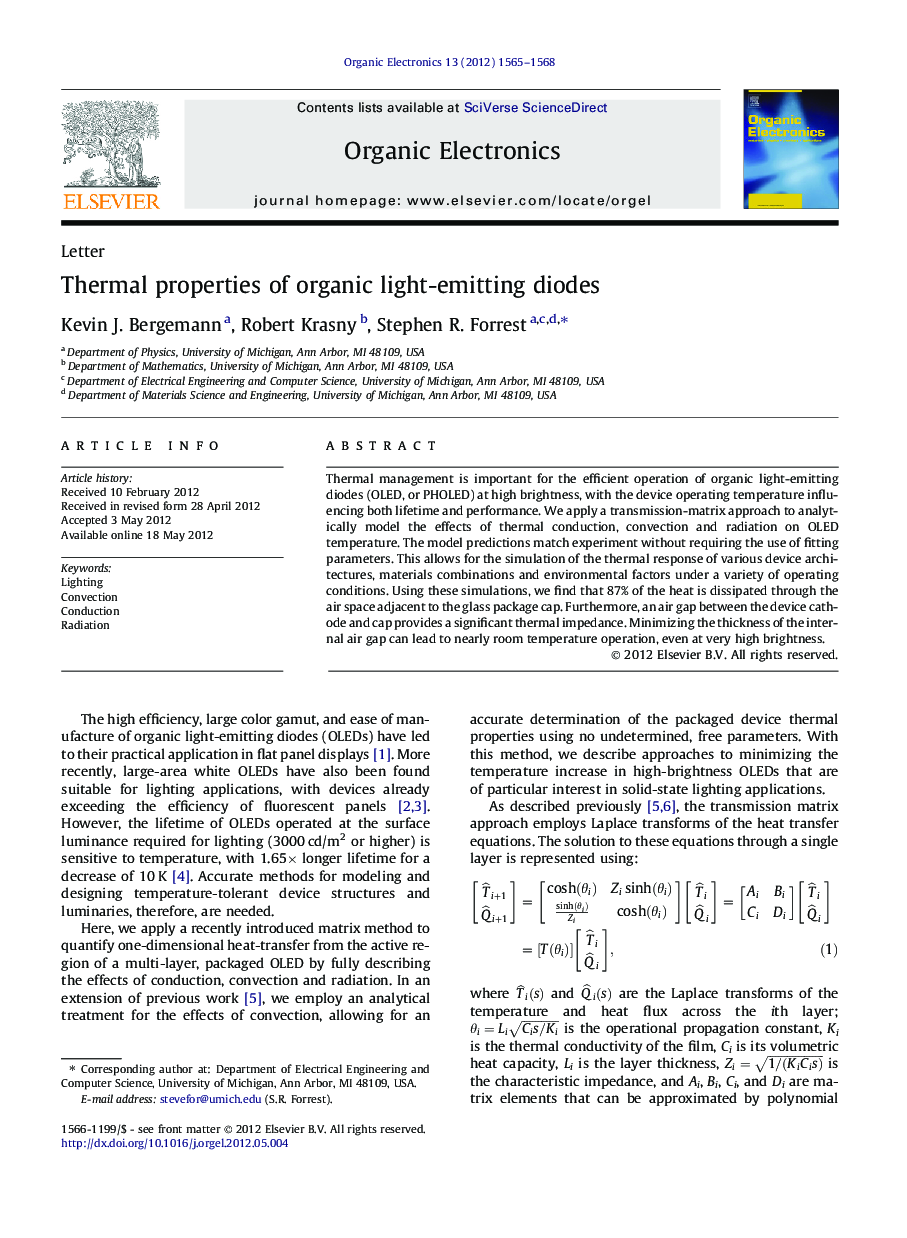| کد مقاله | کد نشریه | سال انتشار | مقاله انگلیسی | نسخه تمام متن |
|---|---|---|---|---|
| 1264552 | 972153 | 2012 | 4 صفحه PDF | دانلود رایگان |

Thermal management is important for the efficient operation of organic light-emitting diodes (OLED, or PHOLED) at high brightness, with the device operating temperature influencing both lifetime and performance. We apply a transmission-matrix approach to analytically model the effects of thermal conduction, convection and radiation on OLED temperature. The model predictions match experiment without requiring the use of fitting parameters. This allows for the simulation of the thermal response of various device architectures, materials combinations and environmental factors under a variety of operating conditions. Using these simulations, we find that 87% of the heat is dissipated through the air space adjacent to the glass package cap. Furthermore, an air gap between the device cathode and cap provides a significant thermal impedance. Minimizing the thickness of the internal air gap can lead to nearly room temperature operation, even at very high brightness.
Figure optionsDownload as PowerPoint slideHighlights
► Thermal performance of OLEDs modeled using matrix method with no adjustable parameters.
► Phosphorescent OLED temperature response at high brightness measured and compared to model.
► OLEDs shown to operate at room temperature at high brightness in appropriately designed packages.
Journal: Organic Electronics - Volume 13, Issue 9, September 2012, Pages 1565–1568